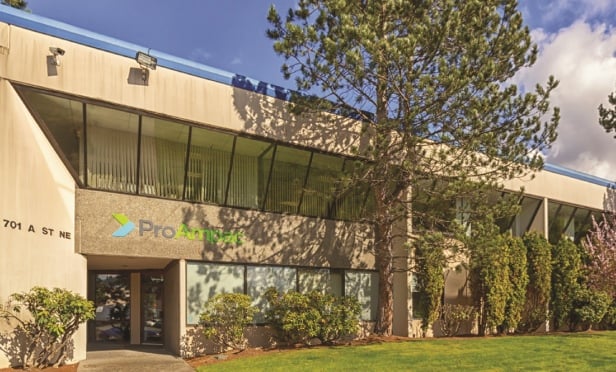IRVINE, CA—In the age of healthcare reform, experts are noticing a growing trend of physicians buying their own medical-office buildings. Dennis Ghan, senior real estate attorney with Palmieri Tyler, tells GlobeSt.com that he has represented several doctors and doctor groups of late in their effort to acquire office properties to build their own medical offices. He says doctors are becoming more business savvy and realizing the financial upside to owning a property as well as renting out space to other doctors and medical groups. In fact, he is currently representing a group of doctors in Long Beach, CA, that is buying property to build a medical-office building.
“Many doctors have the desire to control their own destiny and protect against future rent increases,” says Ghan. Landlords raise their rents, and they're locked into a location with leverage in negotiating with landlords on rent. They also like the idea that if you own, you can use rent money to help build your personal wealth over time as opposed to paying rent to a third party. With the consolidation of practice groups right now, they want to change the mix a little bit.”
Ghan says he sees this trend as a plus for the industry in that it brings in more competition, which can be good for tenants, owners and developers. “Also, frequently these medical groups bring stable ownership to a project. It's not just somebody coming in and out on a short-term basis. These are occupies, and for the most part, that's good.”
Another plus is that physician/owners can provide insight into how these MOBs are designed. “They actually use the space, and they know what works and what doesn't,” says Ghan.
However, having so many more owner/users in the mix can contribute to overbuilding, he adds. “That can depress rents, which hurts everybody, especially building owners struggling to keep their buildings going.”
In some cases, medical groups are becoming developers or buying existing older buildings and rehabbing them. “It's expensive to build your own building, but state-of-the-art buildings have their own appeal to some doctors,” says Ghan. “They offer the latest and greatest of technology, energy management, environmental consciousness, in addition to the plus of being in a new building.”
Ghan cautions that physician/owners need to be aware of regulatory requirements that apply to them as landlords, particularly Stark and anti-kickback laws. He also highly recommends hiring professionals when it comes to development, property management and day-to-day administration. “Most doctors don't have the time or motivation for that type of thing. On these deals, they need to be careful with tenant-improvement commitments, personal guarantees, security deposits, credit risk of tenants, etc. They need professional help in this area, including good counsel, a real estate attorney and property management.
Ghan also recommends looking for locations near hospitals and seeking synergies between doctors in a building, as well as being aware of permits and entitlements. “They need to be careful about that. It can be a great thing for these doctors if they're well advised and they go into it with their eyes open.”
© 2025 ALM Global, LLC, All Rights Reserved. Request academic re-use from www.copyright.com. All other uses, submit a request to [email protected]. For more information visit Asset & Logo Licensing.







